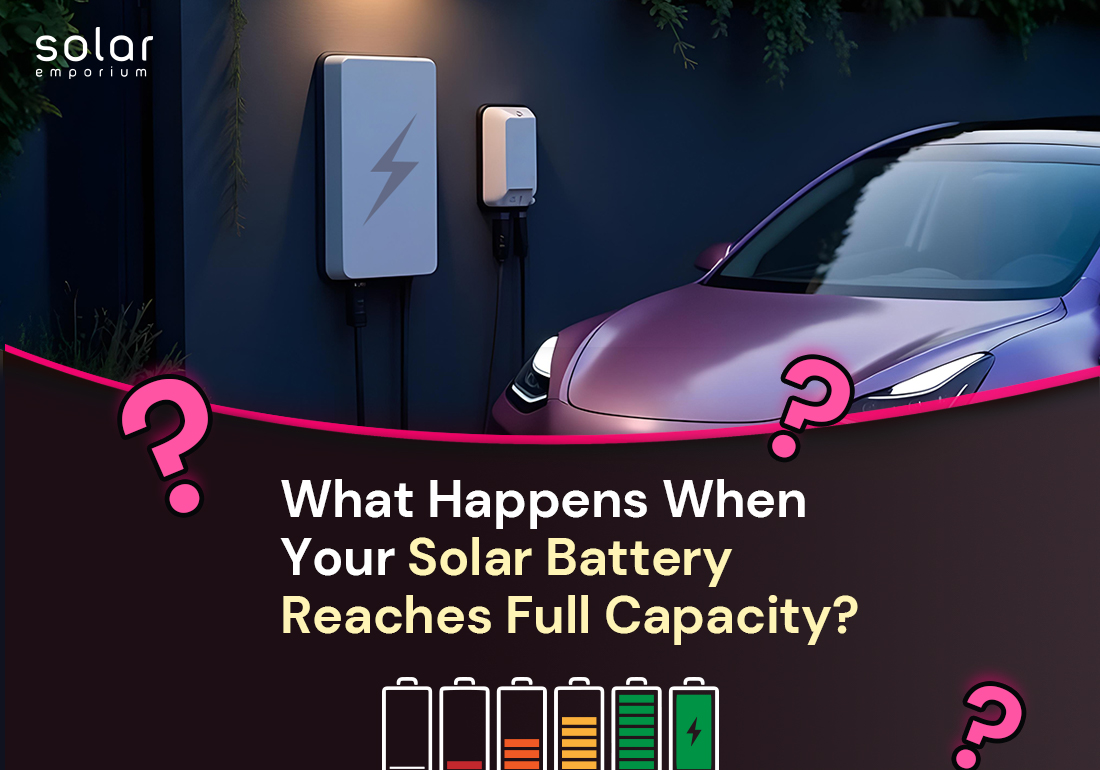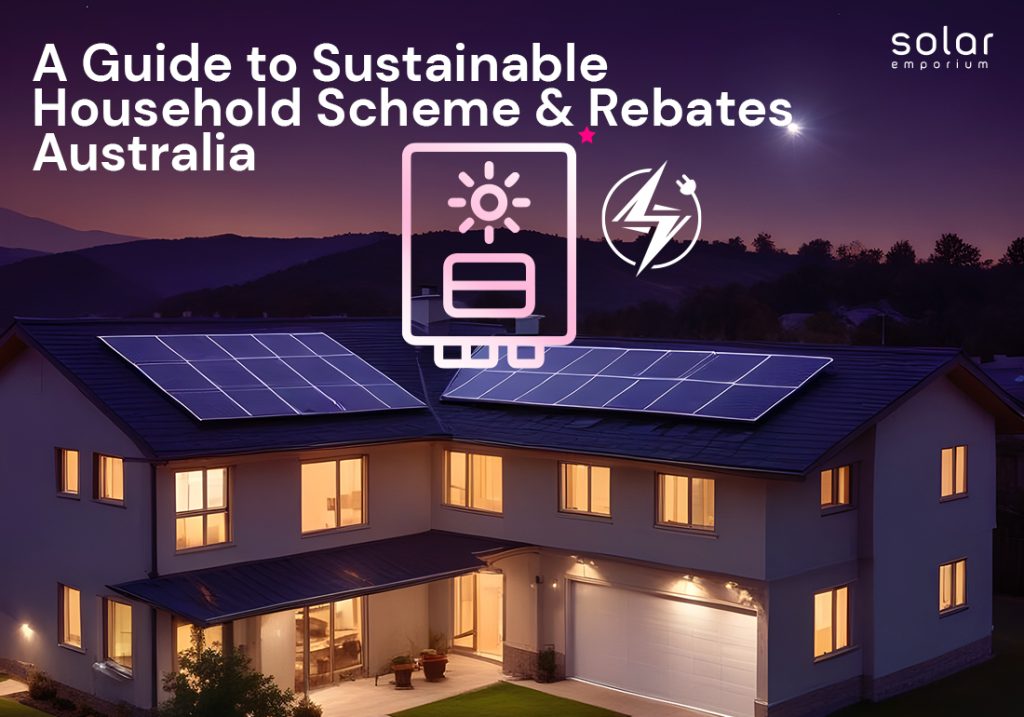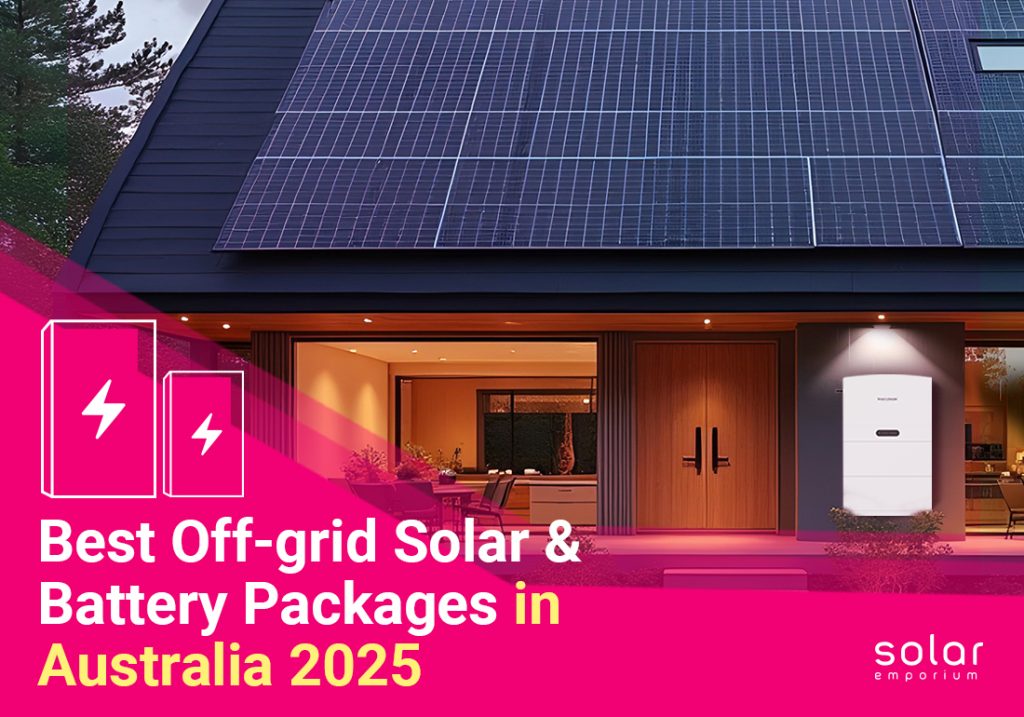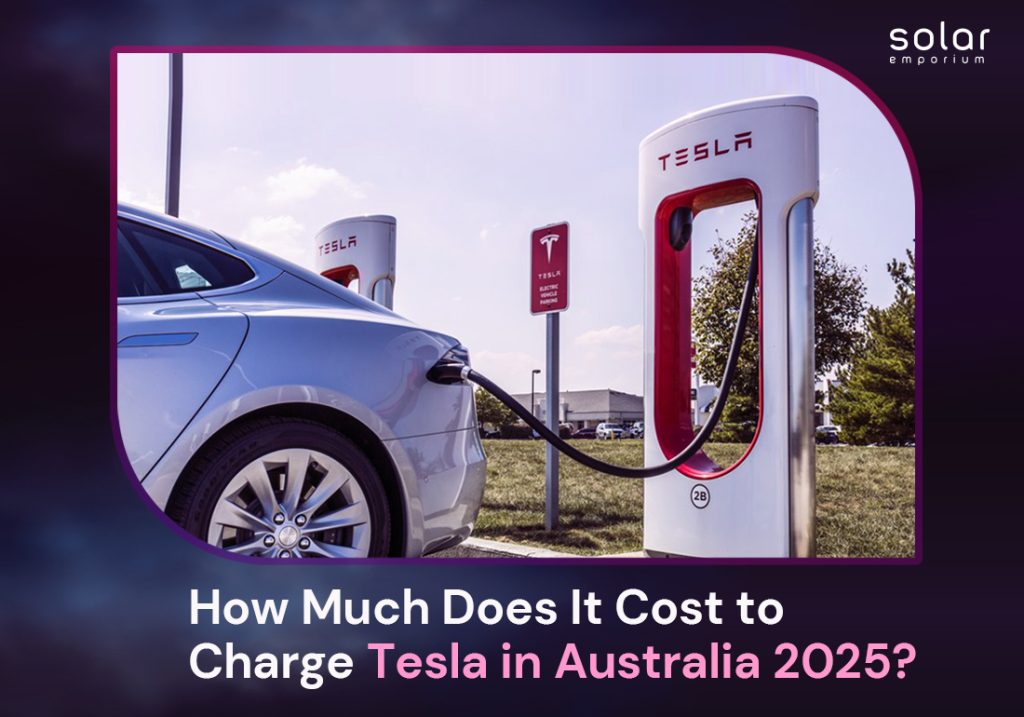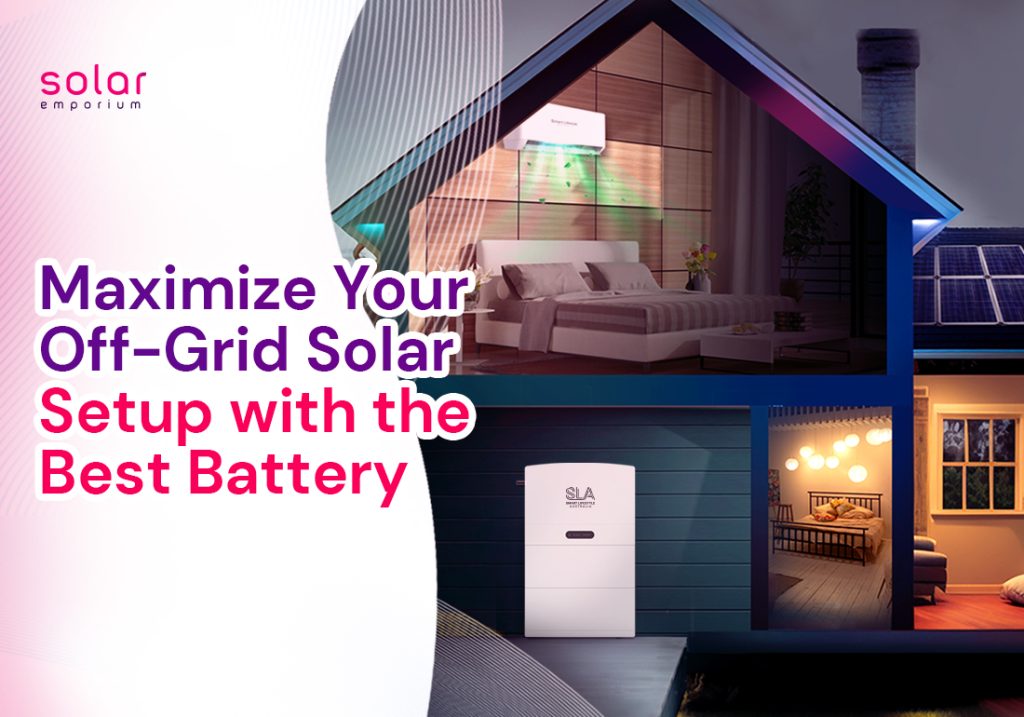Recently, solar energy has gained substantial recognition as a sustainable and cost-effective way to power homes and businesses.
When your solar battery reaches maximum capacity, your energy system hits its peak performance. But what happens when your solar battery reaches full capacity? Will it be wasted? Or will your system get into action, harnessing every precious ray efficiently?
While it might seem good, this process has a few key considerations depending on your setup.
You could see your solar inverter redirect excess energy back to the grid or even experience battery protection features that prevent overcharging.
Overall, the consequences are significant, and the answer could transform your perspective on renewable energy storage.
So, let’s dive into and discover what occurs when your battery is fully charged and how it affects your system by hitting its full storage capacity!
Unveiling the Magic: How Solar Batteries Power Your Home
Living in an eco-conscious world, solar energy is undoubtedly a star player in transforming Australia’s energy landscapes. But do solar panels only deserve the attention of the entire industry? Definitely no!
Solar batteries are equally important for storing these intermittent energy sources. It ensures reliable power when the sun isn’t shining.
How does Solar Battery Work?
Imagine your solar panels generating more electricity than your home can consume. What next! How can you store it efficiently?
This is where magic happens! Rather than wasting energy, solar battery storage captures the excess power for later use when the solar panels are not producing.
When the sun hits the solar panel, it captures sunlight and generates DC electricity. Then an inverter converts it into AC electricity to power homes. However, if your panels generate more power than required, the battery stores this energy until required.
So, when your solar panels can’t meet the demand, the power the battery holds kicks in, keeping your home appliances on without reaching for the grid.
Is Your Solar Battery Full? Find Out!
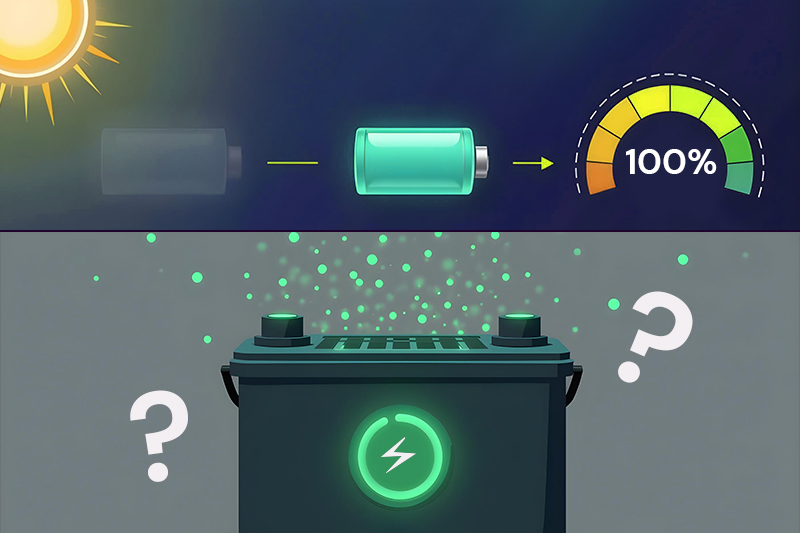
People with a solar panel system often have a common query: How to know if the solar battery is fully charged?
Well, many modern solar batteries, such as Tesla Powerwall 3, come equipped with inbuilt inverters and smart technology that allows you to monitor their charge status via smartphone apps or advanced battery management systems.
When your battery reaches full charge, these systems will notify you with alarms or green indicators.
You can also check the app remotely to know the battery charge status or use voltmeters, hydrometers, and multimeters to check the charge level and get accurate readings.
Moreover, monitoring your solar battery’s charge status and regular battery maintenance is important, especially during summer.
Wondering why? Energy production can be at its peak due to long-term high sun exposure, so the system might overcharge.
Some Key Indicators: Your Solar Battery May Be Overcharging
Overcharging can be crucial for the battery’s health and severely damage its lifespan.
If your solar battery reaches full capacity and power generation exceeds, you might have the risk of overcharging the system.
However, certain signs and visual indications also tell you that your solar battery may be overcharging. Here are some signs:
- Excessive Heat: The battery heats up frequently and feels unusually warm or hot when touched.
- Decreased Performance: A noticeable drop in the battery’s ability to hold charge or supply power.
- More Voltage Fluctuations: Frequent voltage fluctuations can hamper the battery’s internal structure, leading to premature ageing.
- Physical Damage: Swelling, cracks, leaks, or visible rust distorting the battery casing.
- Frequent Overcharging Alerts: Notifications or warnings from your solar system indicating overcharging.
Why Solar Batteries Reach Full Capacity?
The reason a solar battery reaches maximum capacity is pretty simple and transparent. It could be because solar panels produce more energy than you consume daily.
Other reasons lie behind are solar panel’s efficiency, system size, weather conditions, and geographical location.
For example, in Australia, the regions that produce the most solar energy are typically located in the sunnier, northern, and western parts of the country.
Several states like Queensland, New South Wales, South Australia, and Western Australia are the leaders in solar energy production. The high levels of sunshine, especially in coastal regions, make them ideal for solar power generation.
Moreover, areas with clear skies, less cloud cover, and long hours of sunlight are naturally more productive for solar energy, making solar power a highly efficient and sustainable option.
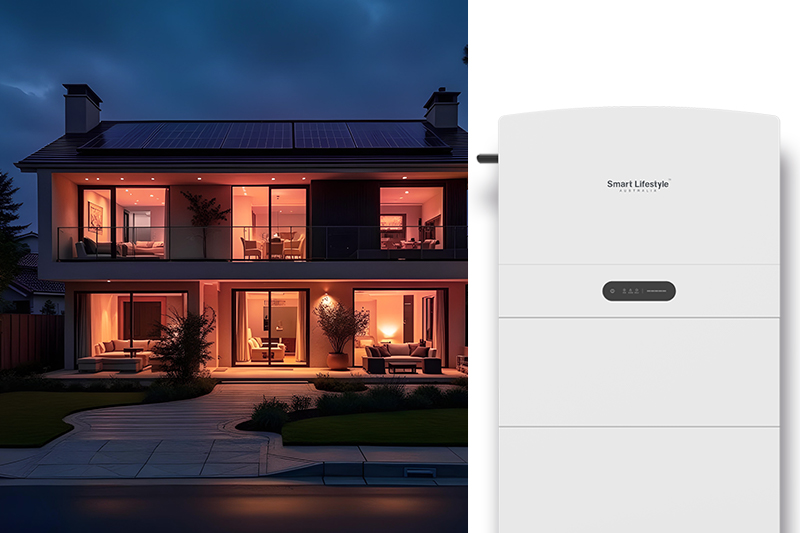
Implications for Homeowners: What Does This Mean for You?
While you’re saving money or reducing your global carbon footprint, any excess energy helps you to make the most of your solar investment.
It can be a game-changer for Australian homeowners, as it maximizes financial returns by fully utilizing feed-in tariff programs available in various states. Some utility companies also provide high incentives for clean energy generation during peak hours.
Relying on stored energy means you don’t need to purchase electricity from the grid. This ultimately saves cost, reduces grid reliance, ensures grid stability, and increases your home’s energy resilience.
Turning Extra Solar Power into Savings | How It's Stored, Used, or Sent Back to the Grid?
Whenever the solar battery is fully charged, the inverter and charge controller step in to perform their task. Together, they mitigate the risk of overcharging by sending power back to the grid or storing it in thermal storage.
So, if your solar battery reaches full capacity, here’s how to get the most out of it:
1. Export to the Grid
If your utility company allows it, you can sell or export the excess power to the grid. Through net metering, you are compensated for the energy you send back.
In many Australian states, this feed-in tariff program is one of the most common and practical ways to manage surplus energy.
2. Use Energy-Consuming Appliances
3. Solar Batteries with Smart Grid-Tied Systems
Integrating solar batteries with a smart grid can be a beneficial solution for extra power.
Smart grid-tied solar systems help lower electricity bills, particularly by peak shaving. They also generate income or credits when electricity rates are higher.
4. Use Smart Home Energy Management Systems
Home energy management systems can help you in load shifting and automatically manage the flow of energy in your home.
It prioritizes which devices should consume power when the panels are producing the most energy. It also ensures that energy isn’t wasted.
5. Transfer Power to Off-Grid Applications
Have you ever wondered if fully charged solar batteries could make off-grid living more viable?
Yes, in some cases, excess solar energy can be directed to charge off-grid battery banks, small devices, or other energy storage solutions, providing uninterrupted 24/7 power.
6. Store Excess Energy in Thermal Storage
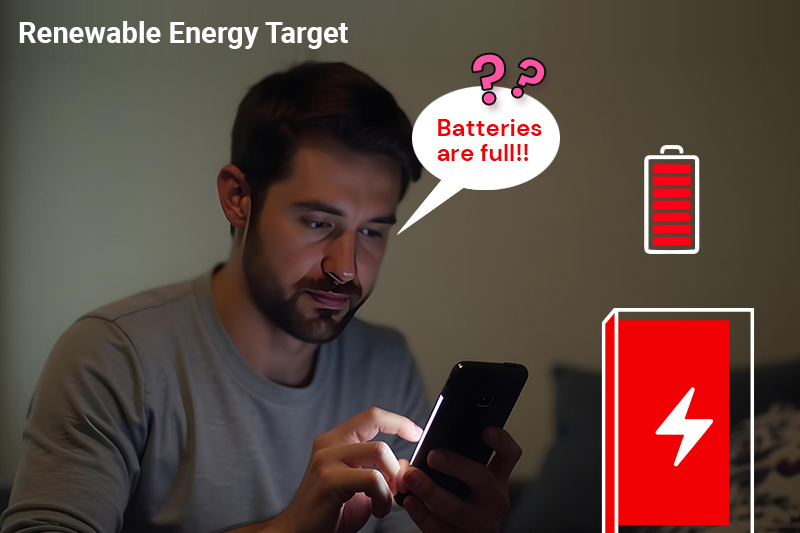
What to Do When Your Solar Batteries Are Consistently Full?
For many Australian homeowners, the sight of their solar batteries reaching full charge frequently has become a source of anxiety.
It reminds them that their solar panels might lose efficiency, and batteries might reduce their lifespan due to overcharging or deep discharging.
Therefore, the system must manage the battery’s charge cycles properly to avoid excessive wear out.
To ensure that your solar battery lasts as long as possible, you may want to consider implementing some simple strategies, such as:
- Calculate your electrical load and adjust your energy usage pattern using the capacity of your battery bank.
- Reduce the solar panel size by selling some. This produces less energy, hence mitigating the risk of the battery reaching maximum storage capacity.
- If budget is not an issue, consider upgrading battery size or storage capacity. Get equipped with a 10 KW battery or larger option, as they can store more energy and last longer.
- Avoid letting your battery discharge completely before recharging it.
- Increase energy consumption! Consider adding devices like smart thermostats or energy-efficient appliances that can use excess energy.
- You can also use the surpassing power from your solar batteries to cook, heat, refrigerate, or even dehydrate food storage and turn on the AC for long hours.
Parting Thoughts
Apparently, there are several ways to address excess electricity when batteries are full. Some prefer increasing battery storage capacity and storing the energy exclusively for personal use, while others help the surrounding people by providing grid support.
With various options available, the choice remains yours regarding how you will utilize the extra energy and maximize solar investment.
However, remember! Proper planning, collaborative effort, and smart use of available natural resources ultimately help to shape a connected and sustainable green world for all.
Want to adjust your system’s settings and match your energy consumption patterns better?
Contact Solar Emporium today! From powering your homes with solar to consulting with our experts for solar packages, you will find all the reliable solutions here!
